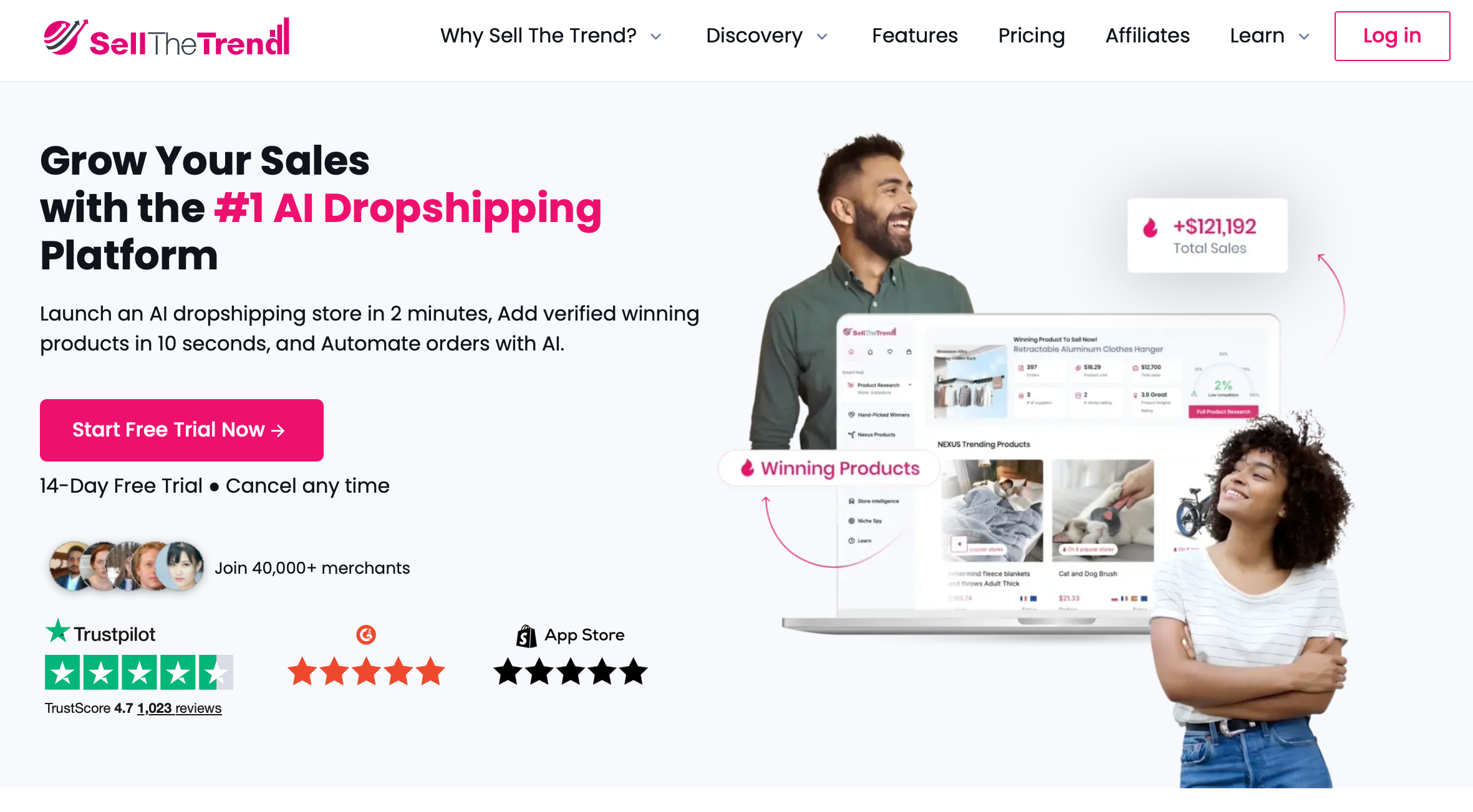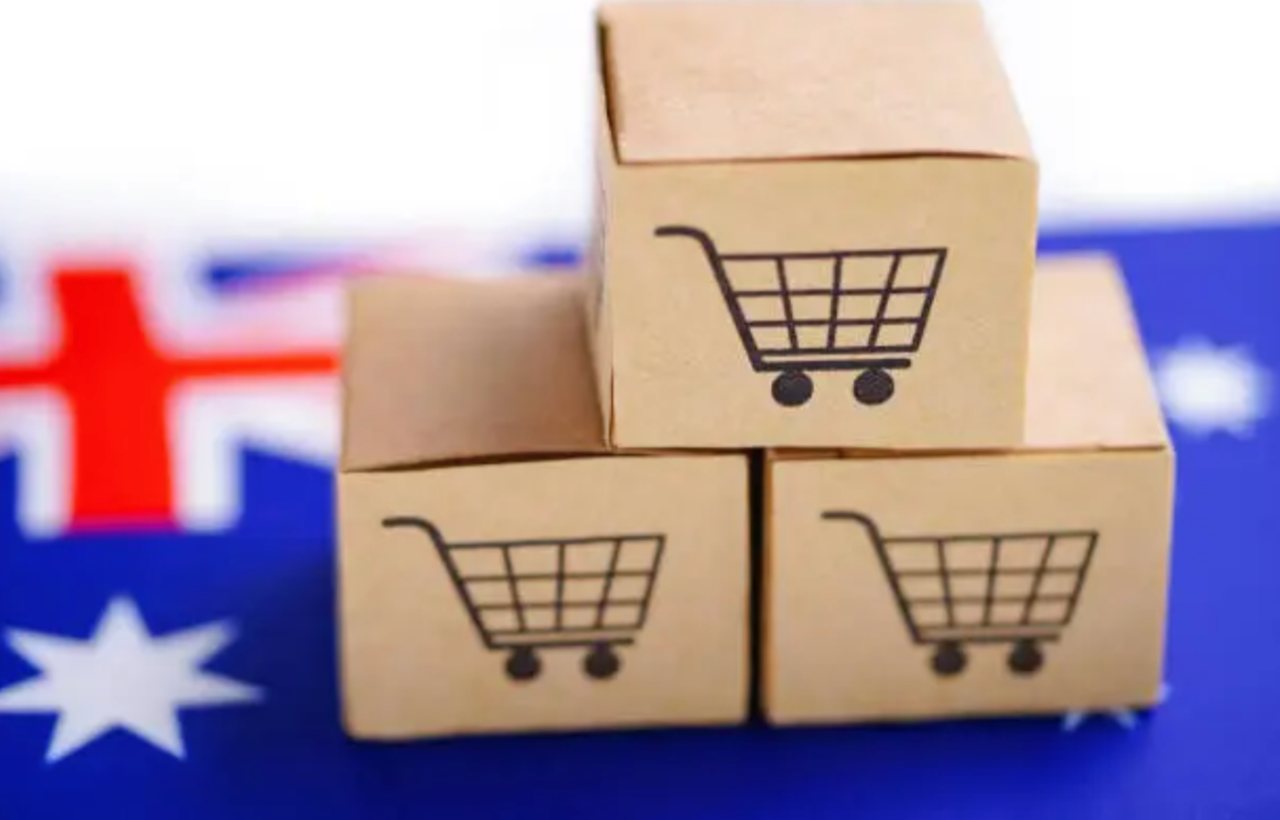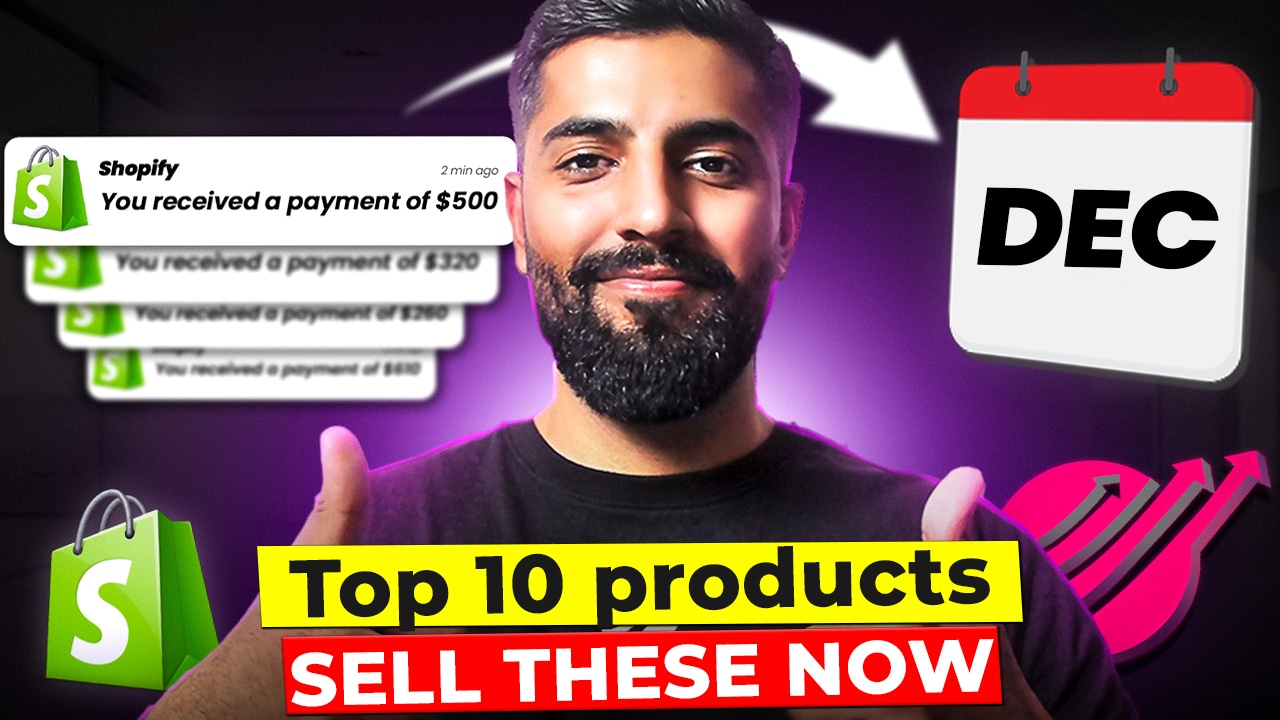How to Start a Dropshipping Business in Australia 2026 – Complete Guide
Contents
Figuring out how to start a dropshipping business in Australia is easier than you might think. You don’t need to buy stock upfront or manage a warehouse. Instead, focus on finding the right products, setting up a simple store, and connecting with reliable suppliers.
This guide will show you, step by step, how to start a dropshipping business in Australia from scratch. We’ll cover how to pick winning products, register your business, and get your online store live. You’ll learn the basics, like getting an ABN and understanding GST.
We’ll also walk through setting up payments, managing shipping and returns, and keeping your customers happy. Plus, you’ll see how to run ads, track results, and grow your store with confidence.
Key Takeaways
- Choose a dropshipping business model to test products and reach more people.
- Australia’s fast-growing australia’s e-commerce market offers plenty of space for new sellers.
- Use Sell The Trend to find suppliers, manage product sourcing, and spot profitable products for your e-commerce store.
- Keep upfront costs low and save money by not holding your own inventory or stocking products.
- Combine paid advertising and paid ads with smart content to help customers find your store and drive more customer orders.
- Stay competitive by tracking your sales data, understanding dropshipping pros, and offering the same products or unique items that people want.
- Always focus on service—happy customers mean more referrals and prove that dropshipping is truly worth your effort.
Key Takeaways
What is Dropshipping and How Does It Work In Australia?
Dropshipping is a simple way to run an online store without keeping stock in your home or paying for a warehouse. Instead of buying products upfront, you list items from suppliers and only pay for them after a customer places an order. This removes most of the risk, which is why many first‑time business owners in Australia choose this model.
Here’s the basic idea: A customer buys from your store → you send the order to your supplier → the supplier ships the product straight to the customer. You focus on marketing, customer service, and building the brand, while the supplier handles the packing and shipping.
In Australia, the model works smoothly, but there are a few rules you must follow. You need an ABN to run the business. If your revenue goes over $75,000 per year, you must register for GST and charge it in your prices. You also need to follow Australian Consumer Law, which means being honest about your delivery times, giving clear return options, and offering refunds or replacements when required.
Find Winning Products and Suppliers Instantly with Sell The Trend

Starting, it’s normal to feel unsure about which products will actually sell or which suppliers you can trust. Instead of guessing or spending hours on research, you can use Sell The Trend to speed up the whole process. This platform is designed to help you spot trending products that people are already buying in Australia and around the world.
Here’s how it works:
- You use Sell The Trend’s product discovery tools to see what’s getting real sales, not just hype.
- You get instant access to reliable suppliers that are ready to work with dropshippers.
- With just a few clicks, you can add top products to your own store and start selling right away.
One of the best parts is automation. When someone orders from your store, Sell The Trend can help you send the order to your supplier automatically—no manual entry, no mistakes. This saves time and lets you focus on marketing and customer service, instead of chasing details.
If you want to start strong and scale fast, using Sell The Trend gives you the data and tools you need. It’s like having a shortcut for finding what works—so you can spend more time building your brand and less time second-guessing your choices.
How To Start A Dropshipping Business In Australia
Step 1: Choose Your Niche
Start by thinking about what people in Australia actually want or need. Your goal is to pick products that solve a real problem or make daily life better. Don’t just chase the latest trend—look for items with steady demand and buyers who are willing to spend.
It helps to use a few smart strategies:
- Check Google Trends or social media for rising products, but make sure interest isn’t just a short-term fad.
- Look at what’s selling well on local marketplaces like eBay or Amazon Australia.
- Notice what people complain about or wish were easier in everyday life.
As you come up with ideas, compare your options. Try to avoid markets that are already packed with big, established brands. At the same time, don’t go so niche that almost nobody is searching for those products.
Think about these points before you commit:
- Can you buy and ship the product for a price that leaves you at least a 30% profit after all costs?
- Is the item light, not fragile, and simple to ship?
- Would you feel confident marketing it to friends or family?
Write down your top ideas and imagine how you’d talk about them online. Picture the type of customer you’d serve and what problems you could solve for them. Take your time with this step. Finding the right niche makes everything else—marketing, sales, even customer service—a lot easier. When you feel good about your choice, you’re ready for the next step.
Step 2: Register Your Business
Once you’ve chosen your niche, it’s time to make things official. Registering your business in Australia is straightforward, but it’s important to do it right from the start. This step helps you build trust with customers, work with suppliers, and meet local legal requirements.
Here’s what to do:
- Apply for an Australian Business Number (ABN). This is required for any business, including dropshipping. You can do it online, and there’s no cost.
- Decide on your business structure. Most people start as a sole trader, which is simple and has fewer costs. If you want more protection or plan to grow fast, consider setting up a company.
- If you expect to make over $75,000 in annual sales, register for Goods and Services Tax (GST). This means you’ll charge GST on your products and report it to the ATO.
Keep these points in mind:
- Having an ABN lets you open a business bank account and work with wholesalers.
- The business structure you choose will affect your tax and personal liability.
- It’s smart to set up a separate bank account for your business, even if you’re starting small.
Take your time and get this step right. Registering your business properly gives you a solid foundation and makes every next step easier.
Step 3: Find Reliable Suppliers
Finding a good supplier is one of the most important choices you’ll make. The right supplier means fast shipping, happy customers, and fewer problems down the track.
Start by looking for suppliers based in Australia. Local suppliers usually offer quicker delivery and simpler returns, which makes a big difference to your buyers. Don’t just pick the first name you see—take your time to compare options.
Check what other store owners say about each supplier. Read reviews about shipping speed, product quality, and how they handle issues. If possible, order a sample for yourself. This is the best way to see the real quality, packaging, and how long it actually takes to arrive.
As you do your research, keep these points in mind:
- Make sure the supplier supports dropshipping—some only sell in bulk.
- Look for clear, simple return policies and honest answers to your questions.
- Good suppliers will communicate quickly and provide tracking for every order.
It’s also smart to have a mix of suppliers if you want to offer more variety. You can work with local suppliers for your main products and add a few trusted international ones for specialty items.
Here’s a strong list of five Aussie‑friendly dropshipping suppliers you can check out. Each one is worth a look for setting up your store.
| # | Supplier | Why It’s Worth Checking | Key Notes |
|---|---|---|---|
| 1 | Dropshipzone | Melbourne‑based, no minimum orders, easy self‑serve portal for dropshippers. | Good for wide product range, local shipping. |
| 2 | Colourblocker | Sydney‑based supplier specialising in trending gadgets & home/gift items, ships Australia‑wide. | Great for unique items, free portal access. |
| 3 | Kogan | Large Aussie e‑commerce brand with dropshipping support and strong domestic logistics. | Ideal for broader catalog and fulfilment reliability. |
| 4 | Crazy Sales | Offers a wide variety of products at competitive prices, including dropshipping‑friendly range. | Good for home/lifestyle items; check service levels. |
| 5 | SaleHoo Directory | Not a single supplier but a directory of thousands of vetted Aussie & global dropship suppliers. | Great for finding niche suppliers or backup options. |
Step 4: Set Up Your Online Store
Getting your store online is a big milestone, but you don’t need to be a tech expert to do it well. Think about how you want customers to feel when they visit—your site should be easy to use, clear, and trustworthy from the start.
Begin by choosing a platform that fits your needs. Shopify is popular for its simplicity and ready-made tools, while WooCommerce is great if you already have a WordPress site and want more flexibility.
Once you’ve picked your platform, it’s time to make your store come to life. Upload your chosen products and make sure every listing has a clear photo and a description that answers the questions shoppers are likely to have. Write in plain language—honesty and clarity help people buy with confidence.
Don’t forget these basics:
- Set up secure payment options like credit cards and PayPal so customers can check out easily.
- Add important legal pages, such as your returns policy, shipping info, and privacy statement, and keep them easy to find.
- Test your entire checkout process—place a test order to see what your customers will experience.
You don’t need fancy design or loads of features to start. What matters most is a clean layout, easy navigation, and clear information. When customers trust your store and can shop without confusion, you’re already ahead of much of the competition.
Step 5: Plan Shipping and Returns
How you handle shipping and returns can shape the whole customer experience. In Australia, people want to know exactly when their order will arrive and how they can get help if something goes wrong. Being clear and honest about this from the start sets you apart from stores that leave buyers guessing.
Begin by checking how quickly your suppliers can ship products to different parts of Australia. Always add a little buffer to the shipping times you list—this avoids disappointment if there are unexpected delays. When possible, choose tracked shipping so customers can follow their order and feel secure.
Writing a fair returns policy is just as important. Make sure it’s easy to find on your website and written in plain language. You don’t want customers to wonder how returns work or if you’ll honor them.
Here’s what helps:
- List estimated delivery times for each product and update them if suppliers change.
- Explain up front how returns and refunds work—how to start a return, how long refunds take, and who pays for shipping.
- Make sure your policy meets the Australian Consumer Law, which protects your buyers’ rights.
It’s a good idea to test the process yourself: place a small order and go through the returns process so you know what your customers experience. When you’re honest about shipping and offer an easy return path, shoppers are more likely to trust you—and to come back for more.
Step 6: Price Your Products
Pricing your products is more than just picking a number that “feels right.” To succeed, you need to cover all your costs and still make a healthy profit. The right price also helps you stand out from competitors and attracts the buyers you want.
Start by adding up everything it costs to get your product to the customer. This includes:
- The price you pay your supplier
- Shipping costs (even if you offer “free shipping,” it needs to be covered)
- Payment processing fees (like PayPal or Stripe)
- Any taxes, such as GST if you’re registered
Once you have your total cost per sale, look at what similar products are selling for in Australia. You want your price to be competitive but not so low you lose money.
A good rule is to aim for at least a 30% margin after all costs are covered. This gives you room to pay for marketing and still see real profit.
Step 7: Launch and Market Your Store
You’ve set up your products, built your store, and sorted out prices and shipping. Now it’s time to let people know your business is open. Getting your first customers is all about being seen in the right places and making a good first impression.
Start by sharing your store with friends, family, and anyone who might be interested. Don’t be shy—personal connections can lead to your first sales and honest feedback.
Next, think about where your ideal customers spend time online. If your products are visual, use Instagram, TikTok, or Facebook to post photos, videos, and short updates. Show real uses for your products and highlight what makes them special.
You don’t need a big ad budget to start. Here are some easy marketing steps:
- Set up social media pages for your store and post regularly.
- Use Google Shopping or Facebook Ads with a small budget to test what works.
- Offer a small discount or free shipping to your first customers to encourage orders and reviews.
- Collect and share positive feedback—reviews help build trust.
What Are The Top Dropshipping Products To Sell In Australia?
Picking the right products is key to building a store that lasts. Focus on items that people actually use and talk about. In Australia, the best sellers are practical and fit local lifestyles.
Here are some of the top 10 dropshipping products to consider for your store:
| Category | Example Products |
|---|---|
| Home & Smart Living | Smart WiFi plugs, LED strip lights, air purifiers, smart bulbs |
| Beauty & Personal Care | Facial cleansing brushes, LED therapy masks, hair styling tools |
| Pet Products | Interactive pet toys, portable water bottles, and grooming brushes |
| Sustainable & Eco-Friendly | Reusable shopping bags, bamboo toothbrushes, beeswax wraps |
| Outdoor, Fitness & Lifestyle | Resistance bands, insulated water bottles, picnic mats, UV hats |
| Kitchen Tools & Gadgets | Digital food scales, vegetable spiralizers, silicone baking mats |
| Health & Wellness | Posture correctors, massage guns, blue light glasses |
| Baby & Kids Essentials | Silicone feeding sets, teething toys, bath thermometers |
| Phone & Tech Accessories | Wireless chargers, phone holders, Bluetooth earbuds |
| Car Accessories | Car organizers, phone mounts, portable vacuums |
What to look for in a “winning” dropshipping product?
Here are features that separate good products from flops:
- Solve a real problem or meet a clear need. Products that fix everyday annoyances or deliver value tend to convert better.
- Reasonable price point. Items that are too cheap may not cover your costs plus ads. A common sweet spot is roughly AUD $20–$150. (see broader research)
- Lightweight and easy to ship to Australia. Heavy or fragile items increase risk, cost, and returns.
- Unique enough that local stores don’t easily duplicate them. If the same item is sold locally everywhere, customers may choose local over your store.
- Margin room. After you pay product cost + shipping + fees + ads, you still want a profit. Research suggests margins of 20‑40% or more are achievable.
- Social/visual appeal. Since a lot of traffic comes from social media (TikTok, IG), products that look good in short videos/photos help a lot.
- Match local market needs. Australia has specific shipping‑time expectations, and products that face long overseas shipping may face complaints. Using local or fast suppliers helps.
[callout] Pro tip: Use Sell The Trend
How To Start A Dropshipping Business In Australia: FAQs
1. How much money do you need to start dropshipping in Australia?
The amount you need depends on your financial circumstances, but most new store owners can get started with as little as $500 to $2,000 AUD.
This covers your Shopify store or other e commerce store setup, some basic paid advertising or social media ads, and the first month of subscription fees for any essential apps. It’s important to plan for ongoing marketing costs and keep some funds set aside for unexpected expenses or hidden fees. Always track your customer acquisition costs and don’t forget about transaction fees on each sale.
2. How do I start dropshipping in Australia?
First, pick a product niche with proven market demand. Next, register your business name and create your dropshipping store or dropshipping website. Do product research to find profitable products and reliable suppliers. You’ll need to set up clear product listings, use content marketing and social media marketing to attract customers, and run targeted Google Ads or email marketing to reach your target audience. Make sure you can offer delivery speed and work with trusted carriers to boost customer satisfaction.
3. Do you need a license to dropship in Australia?
You don’t need a special business licence to run a dropshipping model in Australia, but you must register your business with the Australian government. You also need an ABN (Australian Business Number), and you must follow all relevant rules to keep your dropshipping legal. Check local requirements if you plan to sell custom or restricted items, and always stay updated with official advice or ask a financial advisor if you’re not sure.
4. Who is the best dropshipper in Australia?
There’s no single “best” online seller for everyone—success depends on what you sell, your service, and how you manage your supply chain. Focus on offering quality products and excellent service to stand out from other sellers.
The best dropshippers usually build a strong local business with reliable inventory, fast customer order processing, and honest support. Track your sales data, study and research competitors, and keep testing your own products or even offer custom products if you want to stand out.
Conclusion
Dropshipping gives you a flexible way to sell products online with low risk and minimal investment. With the right tools, smart marketing, and reliable suppliers, you can build a store that grows alongside Australia’s e-commerce market—and see real results from your efforts.









